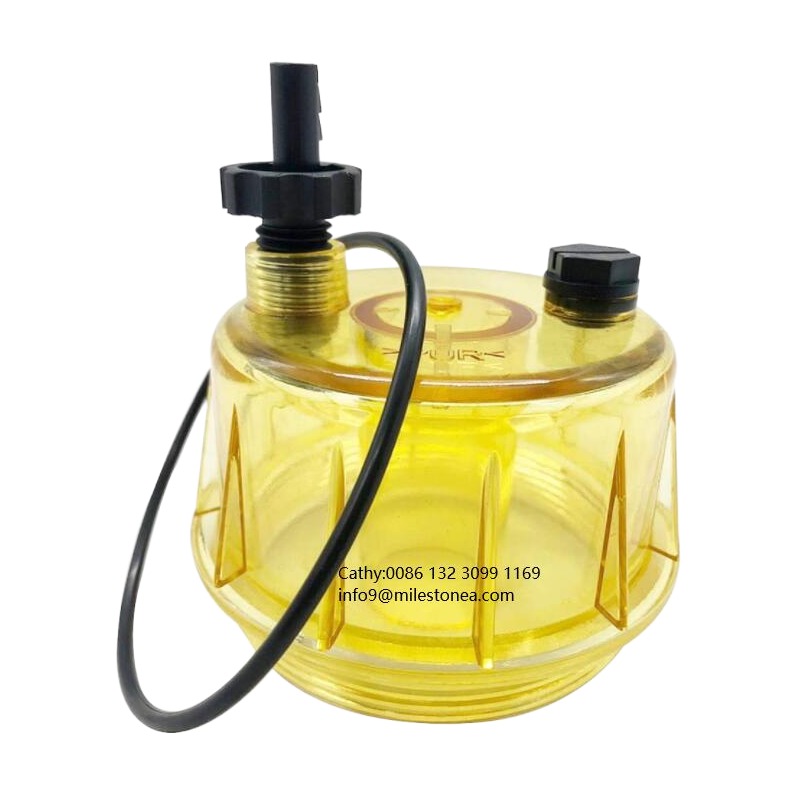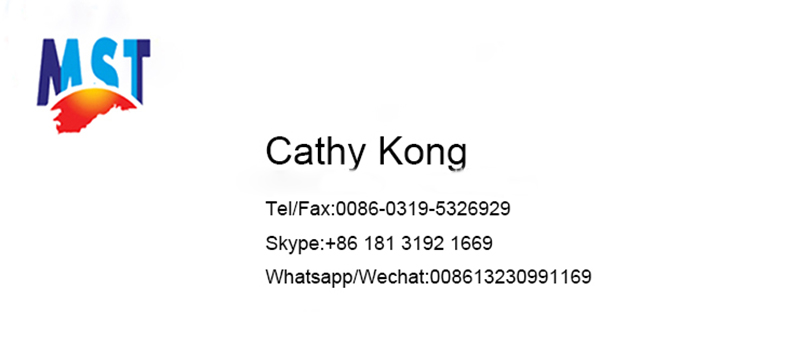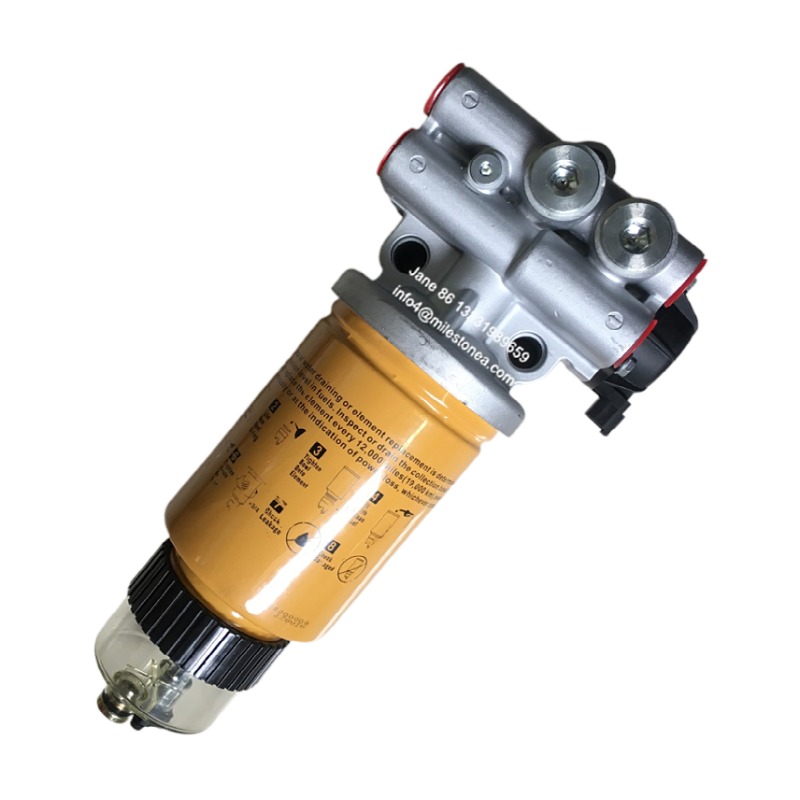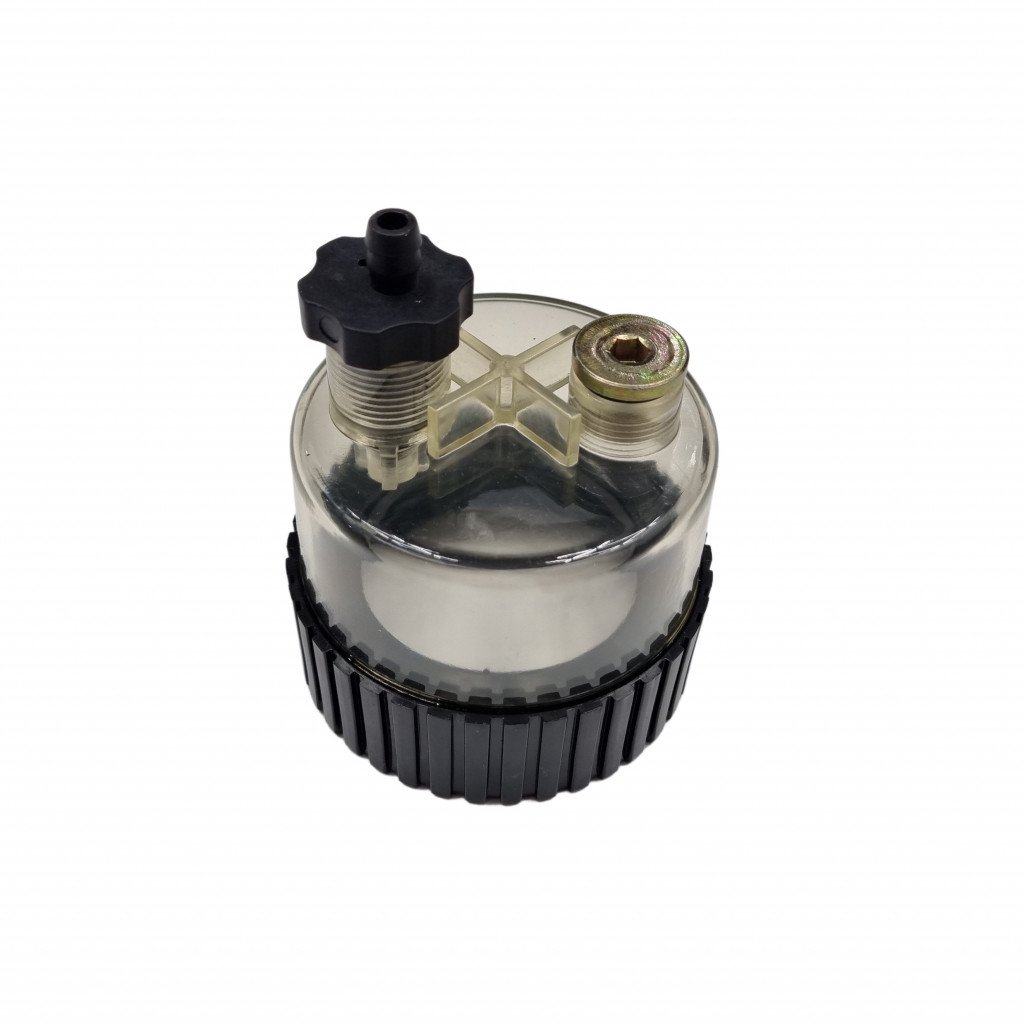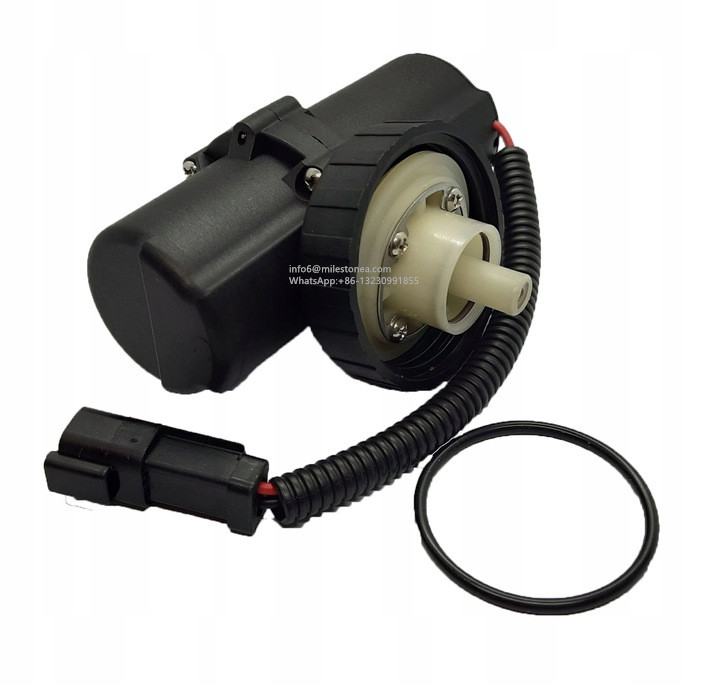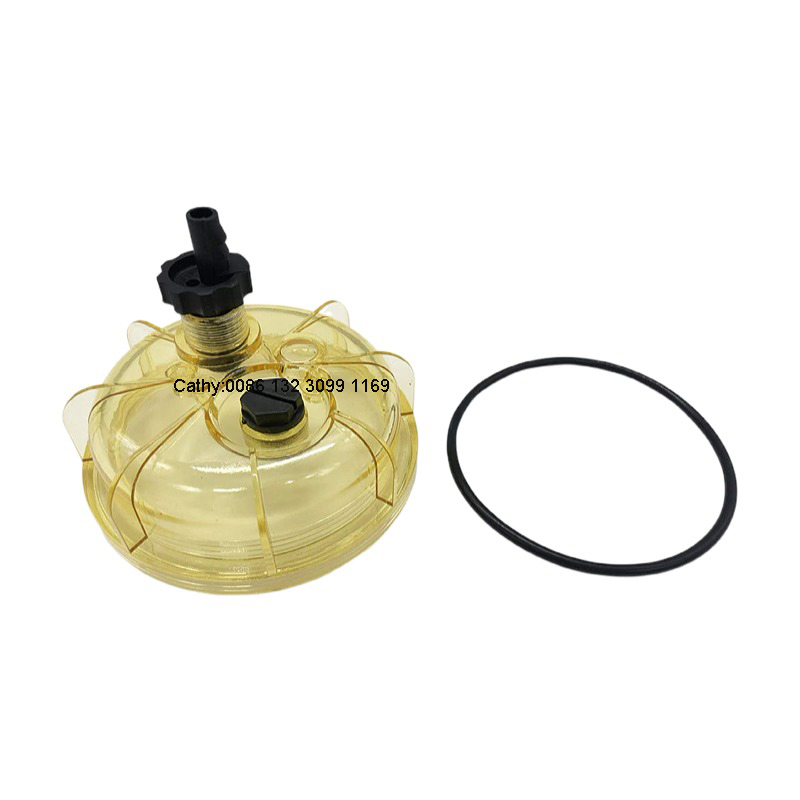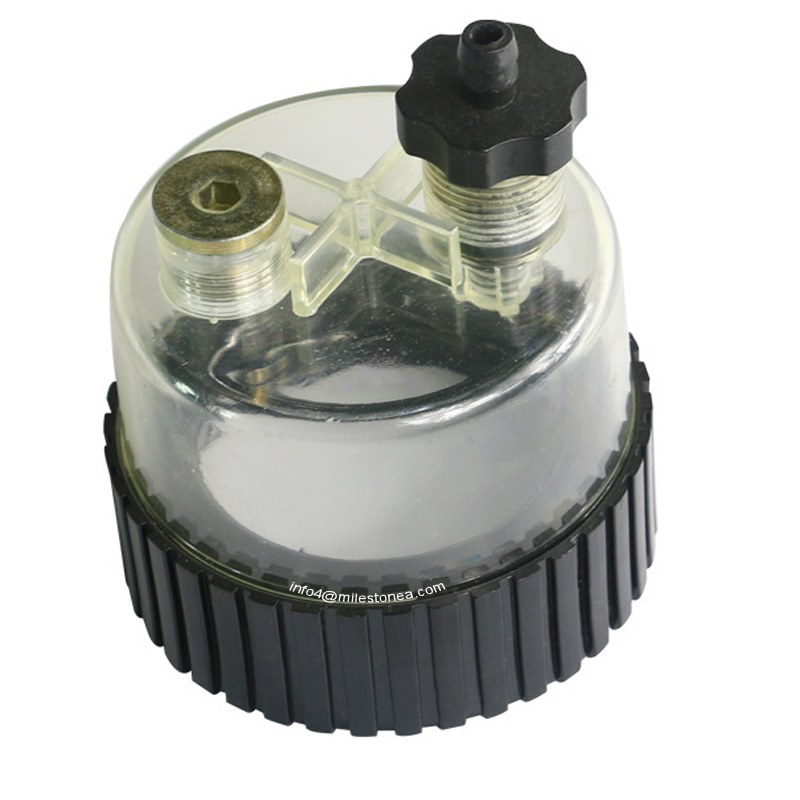R20 fuel filter bowl oil water separator parts cup bowl
R20 fuel filter bowl oil water separator parts cup bowl
Repairing Glass Bowl Fuel Filters
Question:
I am finding a rust-colored powder in my fuel filter bowl and in the bottom of the carburetor. It looks like rust but I can’t understand where the rust is coming from. How could the rust or any sediment get past the fuel filter? I hope you have some ideas.
I noticed a loss of power on acceleration that led me to this problem, and there are air bubbles in the glass fuel bowl when the engine is running, but no fuel leaks. Is this normal or part of an underlying problem?
Answer:
there are several problems that can be caused by a restricted fuel filter. The glass bowl fuel filters have a few additional problems the inline fuel filters don’t have.
In a glass bowl fuel filter, the fuel enters the bowl through the center hole in the top of the filter housing and exits through a different opening on the top of the housing.
The fuel filter element must seal tightly against the top of the fuel filter housing for all of the fuel to pass through the filter correctly. If the filter is not seated correctly the fuel could possibly bypass the filter, and small bits of sediment could also go out through any small gap.
There are several different fuel filter configurations so be sure and get the correct filter for your application. The filters come in different sizes and some filters have a large upper paper housing with small holes around the outside. Certain original filters used a stone-like element with an integral sealing gasket at the top.
When changing the fuel filter, install the fuel filter first and then the rubber gasket. Place the rubber gasket on the rim of the bowl and push it up into the housing and tighten the bowl screw. Be sure to check for any fuel leaks.


